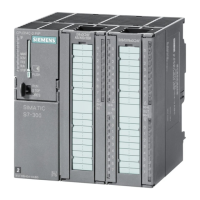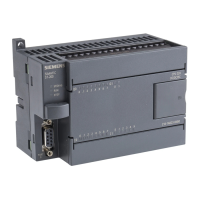Program instructions
7.3 Communication
S7-200 SMART
186 System Manual, 09/2015, A5E03822230-AC
6.
Any character:
The Receive instruction can be configured to immediately start receiving
any and all characters and placing them in the message buffer. This is a special case of
the idle line detection. In this case the idle line time (SMW90 or SMW190) is set to zero.
This forces the Receive instruction to begin receiving characters immediately upon
execution.
Setup: il = 1, sc = 0, bk = 0, SMW90/SMW190 = 0, SMB88/SMB188 = don't care
Starting a message on any character allows the message timer to be used to time out the
receiving of a message. This is useful in cases where Freeport is used to implement the
master or host portion of a protocol and there is a need to time out if no response is
received from a slave device within a specified amount of time. The message timer starts
when the Receive instruction executes because the idle line time was set to zero. The
message timer times out and terminates the receive message function if no other end
condition is satisfied.
Setup: il = 1, sc = 0, bk = 0, SMW90/SMW190 = 0, SMB88/SMB188 = don't care, c/m = 1,
tmr = 1, SMW92 = message timeout in milliseconds
The Receive instruction supports several ways to terminate a message. The message can
be terminated on one or a combination of the following:
1.
End character detection:
The end character is any character which is used to denote the
end of the message. After finding the start condition, the Receive instruction checks each
character received to see if it matches the end character. When the end character is
received, it is placed in the message buffer and the receive is terminated.
Typically, you use end character detection with ASCII protocols where every message
ends with a specific character. You can use end character detection in combination with
the intercharacter timer, the message timer or the maximum character count to terminate
a message.
Setup: ec = 1, SMB89/SMB189 = end character
2.
Intercharacter timer:
The intercharacter time is the time measured from the end of one
character (the stop bit) to the end of the next character (the stop bit). If the time between
characters (including the second character) exceeds the number of milliseconds specified
in SMW92 or SMW192, the receive message function is terminated. The intercharacter
timer is restarted on each character received. See the following figure.

